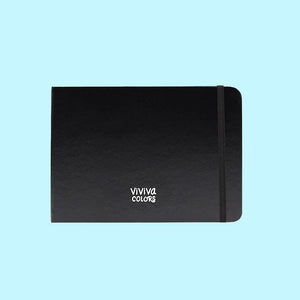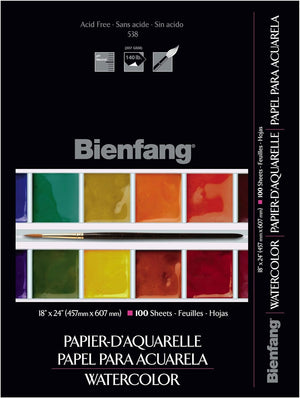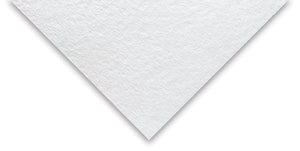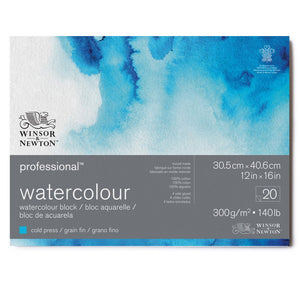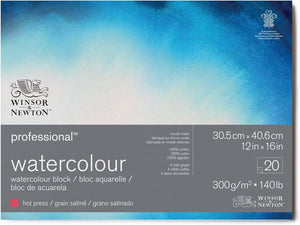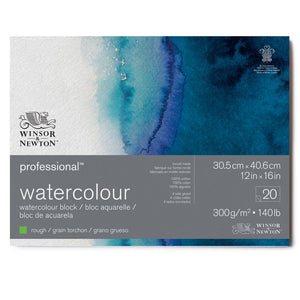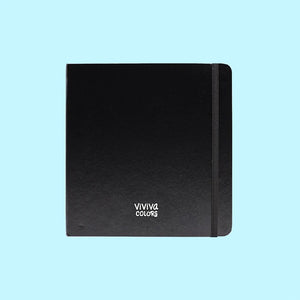- Home
- WATERCOLOR SURFACE

WATERCOLOR SURFACE
This collection is currently under construction. We carry a massive selection of watercolor paper sheets, pads, blocks, and rolls in our Birmingham store. Please come in or call 205-322-4741 if you cannot find what you are looking for.
Watercolor paper (or watercolour paper) is paper or substrate onto which an artist applies watercolor paints, pigments, or dyes. Watercolour paper is a versatile surface which has a degree of absorbency that allows transparent colour to appear its most luminous. Watercolour paper is not only for use with watercolour paints – it can also be used for acrylics, gouache, pastels, pencils, graphite, charcoal, and it can also be primed for oil.
Paper is made using a mixture of water and cellulose fibers. In artists' quality papers those fibers should be 100% cotton which makes it strong but pliable surface that is a durable and archival support for many different mediums. Paper made from cotton is often referred to as "rag paper". Less expensive papers are made using wood pulp, or sometimes a combination of cotton and other cellulose fibers. If you care about permanence or plan on using lots of scrubbing, scraping, taping, and masking techniques you should use 100% cotton paper which can take a beating.
Watercolor paper should be absorbent enough to stabilize the paint, but not so absorbent that the color becomes dull. Sizing provides a little water resistance, so that the paint does not sink too much into the paper, and partially sits on the surface. Watercolor paper can be sized internally, externally, or both, with gelatine, starch, or a synthetic size like Alkyl Ketene Dimer. Internal sizing is when the size is added to the water and pulp mixture before the paper has been made. External sizing (also known as tub sizing) is when the formed sheets of paper are pulled through a gelatine bath. Some papers are both externally and internally sized which increases the wet strength of the paper. Papers that are externally and internally sized are usually best for masking fluid.
There are two main grades of watercolor paper: artists' quality and students' quality. Artists' quality, sometimes known as archival paper, is acid-free and designed to endure. Papers that aren't acid-free will become yellow and brittle over time. If you're a beginner or just practicing, students' quality paper is fine, but the paint won't perform as well and your painting may not stand test of time.
Watercolor paper can be described according to the manufacturing process. It can be hot-pressed, which is very smooth; cold-pressed, which has some texture or "tooth"; or rough, which has a very textured or "toothy" surface. A number of companies sell watercolor papers, some of them with a long history of production. For example, Arches began production of watercolor paper around 1620.

Paper traditionally comes in either 90, 140, or 300 lb weights. Prices range from affordable to more expensive and higher quality.
How is Watercolor Paper Made?
Watercolor paper is usually made by one of three processes: handmade, mould-made or machine-made. Handmade is the best and mold-made comes in a close second. Both are very durable, stable and shouldn't distort under heavy wash. They both feature irregular surface textures which are pleasing to paint on. If you buy artists' quality paper it should be either handmade or mold-made. Students' quality paper is typically machine-made, which is cheaper, but prone to distortion and deterioration when wet.
How is Watercolor Paper Packaged for Use?
You can buy separate sheets individually or in a pack, but if you buy paper with less than 300lb of weight you'll probably need to stretch it beforehand so that it doesn't warp or buckle. This isn't a difficult process, but it is a bit inconvenient. When it comes to artists' quality paper you can also buy it by the roll. As long as you know what you like, this is a good way to save some money in the long run.
Watercolor blocks are a good alternative to sheets if you don't want to go to the trouble of stretching your paper beforehand. Watercolor blocks are a pile of sheets bound together on all sides by glue. You paint on the top sheet and when it dries the paper won't warp or buckle. You then slice it off the pile with a knife and the next sheet is ready to be used.
Watercolor boards (or panels), like blocks, are a convenient option if you don't want to pre-stretch your paper. Traditional watercolor boards consist of watercolor paper that has been glued onto a rigid board. As with other watercolor products, you need to take notice of the type of paper that has been used to make sure the product is durable.
You can also buy other types of watercolor boards that don't actually use paper. Ampersand Aquabords have a clay surface that is archival quality and designed for use with watercolors and gouache. Alternatively, Fredrix produces an archival quality board covered in 100% cotton canvas designed for use with watercolors and other water-based paints. Both of these are interesting and innovative options that are worth trying.
Watercolor paper pads are great for painting outdoors or for practicing. You can get pads containing artists' quality archival paper or students' grade paper. If you're thinking of buying a students' grade pad, make sure that it's acid-free. Most pads are tape-bound which allows you to easily peel off each piece of paper. You can also buy wire-bound pads which are good for travel because you can just flip over a finished work and start work on a fresh piece of paper.
